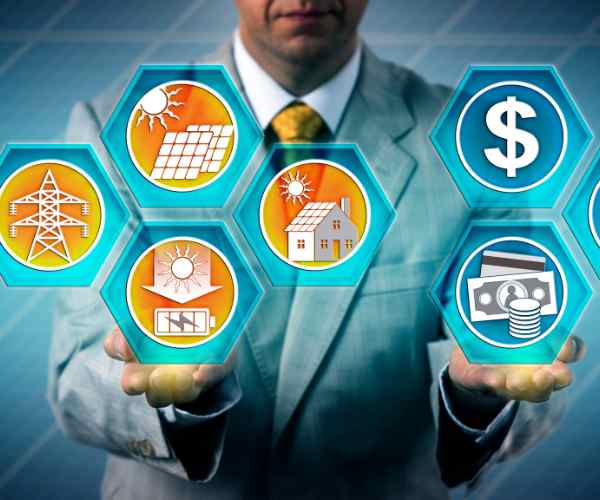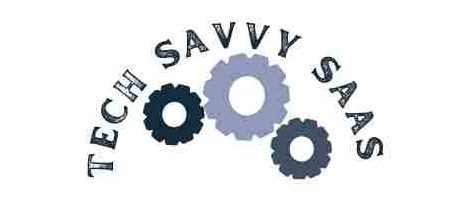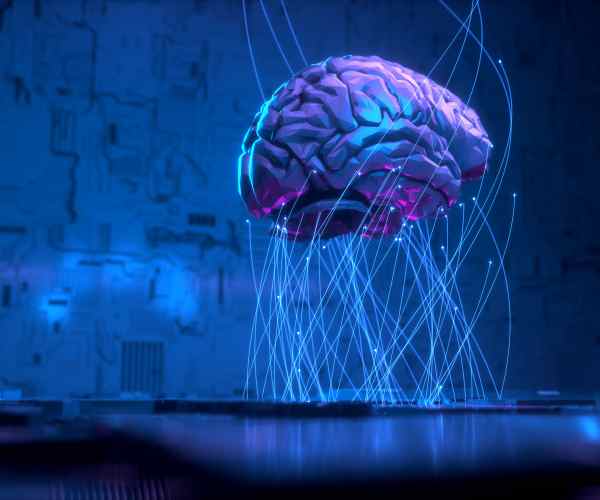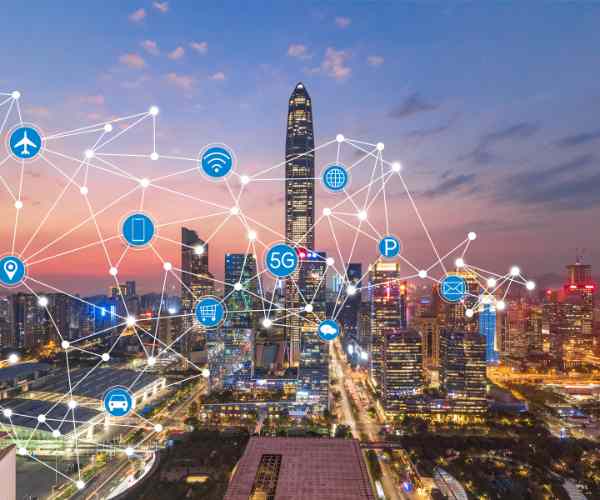Next-Gen Solutions encompasses a broad range of innovative technologies designed to fundamentally transform industries and society. These solutions, such as artificial intelligence (AI), machine learning (ML), blockchain, and Web3, are at the forefront of the new era of business and technology. Their deployment within various sectors is setting the stage for enhanced operational efficiency, improved customer experiences, and new business models.
In a 2022 study by Deloitte, it was noted that 90% of businesses investing in next-gen technologies expect these tools to significantly impact their industry within five years. These technologies enable smarter ecosystems and more responsive solutions to daily and complex challenges.

Why is Understanding This Tech Odyssey Important?
- Why is Understanding This Tech Odyssey Important?
- Emerging Technologies Shaping the Future
- How Are Blockchain and Web3 Integration Transforming Business Operations?
- What potential does quantum computing hold for the future?
- What Role Do Cloud Computing and Big Data Play in Modern Innovation?
- How are IoT and smart devices enhancing urban and home life?
- What are the security concerns with new technologies in the tech landscape?
- How Are Ethical Considerations Impacting Tech Development?
- Key Takeaways
- Conclusion
The significance of this journey lies in its vast potential to drive innovation and create opportunities. As we navigate through the ever-evolving tech landscape, understanding these technologies becomes crucial for professionals aiming to remain competitive and for businesses looking to harness these advancements for growth and sustainability.
A 2021 report from PwC highlighted that AI alone could contribute up to $15.7 trillion to the global economy by 2030, demonstrating the profound impact of these technological shifts.
What Will Be Covered in This Exploration?
This exploration will delve into several key technologies that are defining this tech odyssey:
- Artificial Intelligence and Machine Learning: Revolutionizing sectors like healthcare, finance, and retail with enhanced capabilities.
- Blockchain and Web3: Redefining security and transparency in digital transactions and data management.
- Quantum Computing: Potentially accelerating problem-solving in fields like cryptography and complex system simulations.
Emerging Technologies Shaping the Future
Real-life Example: AI and ML in Healthcare
Artificial intelligence and machine learning are dramatically transforming healthcare through predictive diagnostics and personalized medicine. For instance, AI-driven platforms can analyze thousands of pathology images to detect diseases like cancer much earlier than traditional methods. Research published in the “Journal of Medical AI” in 2023 demonstrated that AI algorithms could improve diagnostic accuracy by up to 40% compared to conventional techniques.
Engaging Story: A Startup’s Journey in Retail
Consider the journey of RetAIler, a startup that utilized AI to enhance customer insights and product usability in retail. By implementing machine learning algorithms, RetAIler was able to analyze customer behavior data collected through in-store sensors and online shopping patterns. This analysis helped them increase customer retention by 25% within the first year by personalizing shopping experiences and optimizing inventory management based on predictive trends.
How Are Blockchain and Web3 Integration Transforming Business Operations?
Blockchain technology extends well beyond its origins in cryptocurrency, providing robust solutions for securing data and enhancing transparency in business operations. For example, consider the global retail giant Walmart, which implemented a blockchain-based tracking system for its food supply chain. This system allows for the tracking of product origins in seconds rather than days, significantly reducing the risk of foodborne illness outbreaks and improving overall food safety.
A 2022 study from Stanford University showed that blockchain implementation in supply chain management could reduce costs related to data breaches by up to 30% and improve inventory management efficiency by 25%, demonstrating significant returns on investment for companies adopting this technology.
Engaging Story: Innovating Digital Experiences with Web3
DecentralArt, a digital art platform, leverages blockchain for Web3 integration to revolutionize how artists and creators monetize their work. By using blockchain to create and manage non-fungible tokens (NFTs), DecentralArt provided artists with a platform to sell their digital artworks directly to consumers without the need for intermediaries. This not only ensured artists received a fair share of the profits but also created a new paradigm for digital art ownership, where buyers could verify the authenticity and ownership history of artworks seamlessly.
This innovative approach has sparked interest across various industries, from gaming to music, where similar Web3 integration strategies are now being explored to enhance customer experiences and engagement.
What potential does quantum computing hold for the future?
Quantum computing presents a transformative potential in fields such as cybersecurity. Unlike traditional computers, which use bits as the smallest unit of data, quantum computers use qubits, which can represent and store large amounts of data more efficiently. This capability makes quantum computing exceptionally suited for breaking complex cryptographic codes, a fact that could both pose a threat to current encryption methods and offer a new level of data protection.
For instance, a recent simulation by researchers at MIT showed that quantum computing could potentially break RSA encryption, a standard for secure data transmission, in just a few hours—a task that would take a conventional supercomputer thousands of years. However, the same technology could be used to develop new, virtually unbreakable encryption methods, ensuring a leap forward in securing sensitive data.
Engaging Story: Solving Complex Problems with Quantum Speed
Imagine the potential impact of quantum computing on drug discovery. PharmaQuant, a hypothetical pharmaceutical company, utilizes quantum computing to model complex molecular interactions at an unprecedented speed. This capability allows them to simulate the effects of drugs on human tissues more accurately and rapidly, thereby significantly reducing the time and cost associated with bringing new drugs to market.
According to projections by the Quantum Economic Development Consortium, the use of quantum computing in pharmaceutical research could shorten the drug development cycle by up to 50% and reduce the costs associated with R&D by 30%, ultimately leading to faster and more efficient healthcare solutions.
What Role Do Cloud Computing and Big Data Play in Modern Innovation?
Cloud computing, exemplified by platforms like Microsoft Cloud, has become a cornerstone for global business operations, enabling remote work and efficient data management. In 2023, a study by Forbes highlighted that 78% of companies attribute their ability to scale operations and improve efficiency to the adoption of cloud technologies. Microsoft Cloud, in particular, has facilitated seamless collaboration and data accessibility with a reported 99.9% uptime, ensuring that businesses can operate without geographical boundaries.
Moreover, during the COVID-19 pandemic, companies leveraging cloud solutions reported a 47% higher productivity rate compared to those relying on traditional IT solutions, underscoring the pivotal role of cloud computing in maintaining business continuity.
Engaging Story: Transformation of a Major Retailer through Cloud Technology and Big Data
Consider the transformation of RetailX, a multinational retailer that embraced cloud computing and big data to revolutionize its operations. By integrating big data analytics with cloud infrastructure, RetailX was able to optimize its supply chain, reduce waste by 20%, and enhance customer experiences. For instance, big data insights allowed RetailX to predict product demand with a 95% accuracy rate, leading to better stock management and fewer overstock issues.
Furthermore, cloud technology enabled RetailX to deploy new applications across its 500 stores worldwide in just minutes, compared to the months it previously took, significantly improving the agility of its operations.
How are IoT and smart devices enhancing urban and home life?
The Internet of Things (IoT) has been pivotal in transforming urban environments through smart city initiatives. Cities like Barcelona and Singapore have implemented IoT solutions to manage resources and improve services. Sensors deployed across Barcelona monitor everything from traffic and air quality to noise levels, helping the city optimize public transport routes and reduce pollution levels by 30%.
In Singapore, smart water meters provide real-time data to detect leaks and reduce water consumption by an average of 15% per household, showcasing effective resource management enabled by IoT technologies.
Engaging Story: How Smart Devices Are Revolutionizing Home Life
Smart devices are increasingly becoming integral to home life, offering user-friendly products that integrate seamlessly into daily routines. SmartHome Tech, a leading provider of smart home devices, has equipped homes with technologies that automate everything from lighting and heating to security. For example, their smart thermostats learn homeowners’ preferences and adjust temperatures automatically, resulting in an average energy savings of 25% annually.
Additionally, smart security systems with real-time alerts and remote monitoring capabilities have reduced home insurance premiums by up to 20% for users, illustrating not only the convenience but also the financial benefits of integrating smart technology into home environments.
What are the security concerns with new technologies in the tech landscape?
Emerging technologies such as the Internet of Things (IoT) and artificial intelligence (AI) are driving innovation but also introducing complex security challenges. For instance, a 2023 report from the Cybersecurity and Infrastructure Security Agency (CISA) highlighted that IoT devices often lack robust security features, making them vulnerable to cyberattacks. Similarly, AI systems can be exploited to create sophisticated phishing schemes or manipulate data, posing significant risks to data integrity and privacy.
Studies from Stanford University’s Internet Observatory suggest that nearly 70% of security breaches involving IoT devices could have been prevented with more advanced security protocols at the device level, and AI-driven security breaches are increasing by 15% annually, underscoring the growing concern.
Engaging Discussion: Proactive Steps to Mitigate Risks
To address these vulnerabilities, companies are adopting a range of innovative security solutions and intelligent machines. Encryption technologies, zero-trust security models, and AI-driven threat detection systems are among the proactive steps being implemented. For example, businesses are increasingly deploying AI to monitor network traffic and identify unusual patterns that may indicate a security threat, leading to a reduction in breach detection time by up to 40%.
Furthermore, companies like SecureIoT Inc. have developed security frameworks specifically for IoT devices that include regular firmware updates, end-to-end encryption, and multi-factor authentication, providing comprehensive protection layers that significantly decrease the incidence of cyberattacks.
How Are Ethical Considerations Impacting Tech Development?
The integration of AI and automated systems in various sectors has raised significant ethical questions regarding privacy, decision-making, and employment impacts. The development of autonomous vehicles, for example, brings up questions about decision-making in critical situations, commonly discussed as the “trolley problem” in ethics. Additionally, the use of AI in hiring processes raises concerns about bias in algorithms, which can perpetuate discrimination unless carefully managed.
A 2023 Harvard Business Review study found that 35% of AI technologies tested showed evidence of bias in decision-making processes, highlighting the need for more stringent ethical oversight in AI development.
Engaging Discussion: Proposing Ethical Frameworks and Solutions
To navigate these ethical dilemmas, it is crucial for tech companies to implement robust ethical frameworks that guide the development and application of technologies. This includes establishing clear guidelines on the ethical use of AI, ongoing training for developers on ethical issues, and engaging stakeholders in discussions about technology’s societal impacts.
Tech industry leaders are also advocating for the creation of an independent body to oversee AI ethics, similar to how the Food and Drug Administration (FDA) regulates pharmaceuticals. Such proposals aim to ensure that AI and automation technologies are developed and used responsibly, prioritizing human welfare and ethical standards.
Key Takeaways
What Are the Transformative Potentials and Key Features of Next-Gen Technologies?
Quick Tip 1: Leverage AI for Enhanced Decision-Making: Businesses should utilize artificial intelligence to analyze large datasets for improved decision-making, which could lead to a 30–50% increase in operational efficiencies.
Quick Tip 2: Integrate Blockchain for Transparency: Implement blockchain technology to ensure transparency and security in transactions, potentially reducing fraud by up to 55%, according to recent studies by the Blockchain Research Institute.
Quick Tip 3: Adopt IoT for Efficiency: Deploy Internet of Things (IoT) solutions to automate processes and enhance data collection, which can improve productivity by up to 25%, as demonstrated in smart city projects worldwide.
How Can Tech Professionals Navigate the Tech Revolution?
Quick Tip 1: Continuous Skill Development: Stay relevant by continuously updating your skills, particularly in emerging fields like machine learning, quantum computing, and blockchain.
Quick Tip 2: Participate in Tech Communities: Engage with online communities and professional networks to exchange ideas and stay informed about the latest technological advancements.
Quick Tip 3: Embrace Change and Innovation: Adopt a mindset open to change and innovation, essential for navigating the rapid developments in technology.
Why is continuous learning crucial in tech?
Quick Tip 1: Stay Ahead of Industry Curves: Continuous learning helps professionals anticipate and adapt to technological changes, securing a competitive edge in the job market.
Quick Tip 2: Harness the Full Potential of Tech Innovations: Understanding and utilizing the full capabilities of new technologies can lead to breakthrough innovations and significant career advancements.
Quick Tip 3: Promote a Culture of Knowledge Sharing: Encourage a learning culture within your organization to foster innovation and improve team performance and morale.
Conclusion
The journey through next-gen solutions has been marked by a rapid evolution of technologies that are transforming industries and everyday lives. From AI-driven analytics enhancing business decisions to IoT devices streamlining urban management and smart home systems, these technologies are setting the stage for a more efficient and interconnected world.
Looking ahead, the role of technology in driving innovation and creating a utopian world seems more tangible than ever. As we continue to integrate these advanced technologies into all aspects of life, they promise to enhance the quality of living, foster global connectivity, and ultimately contribute to a sustainable future.
The future of technology is not just about the tools we create but also about the humanity we preserve and enhance through these advancements. It’s about building a world where technology serves as a bridge to solve our greatest challenges and achieve collective aspirations.
More Post






